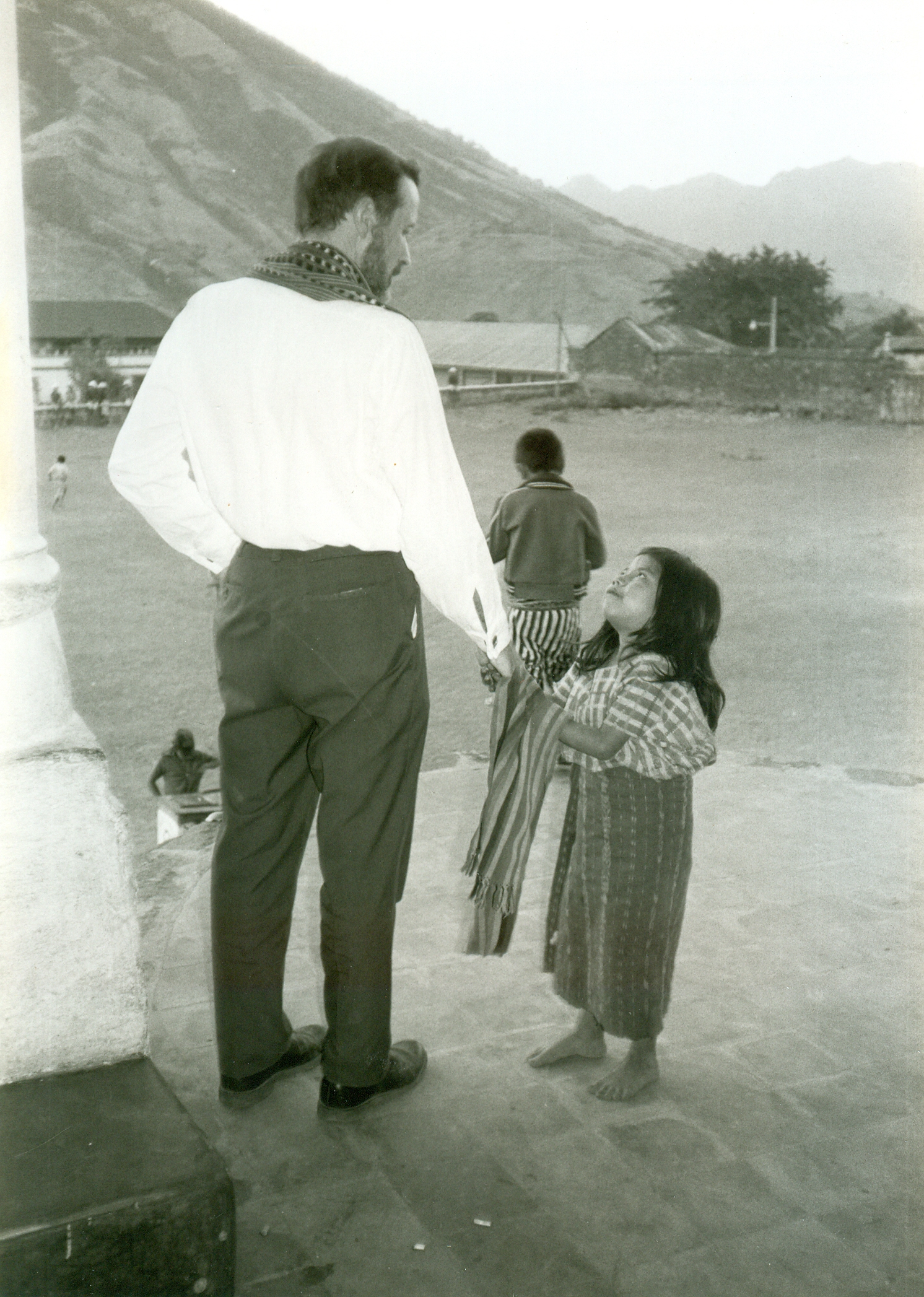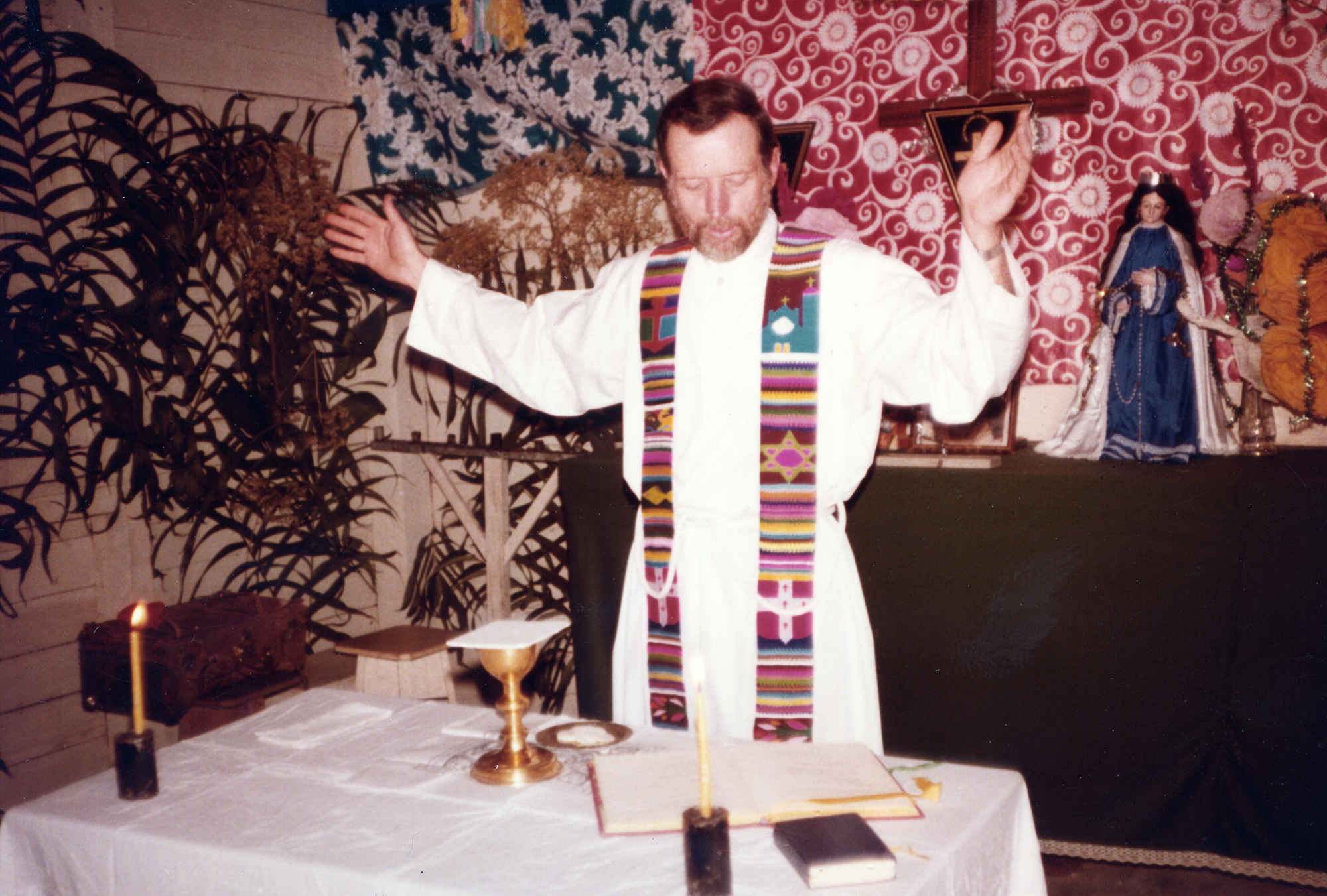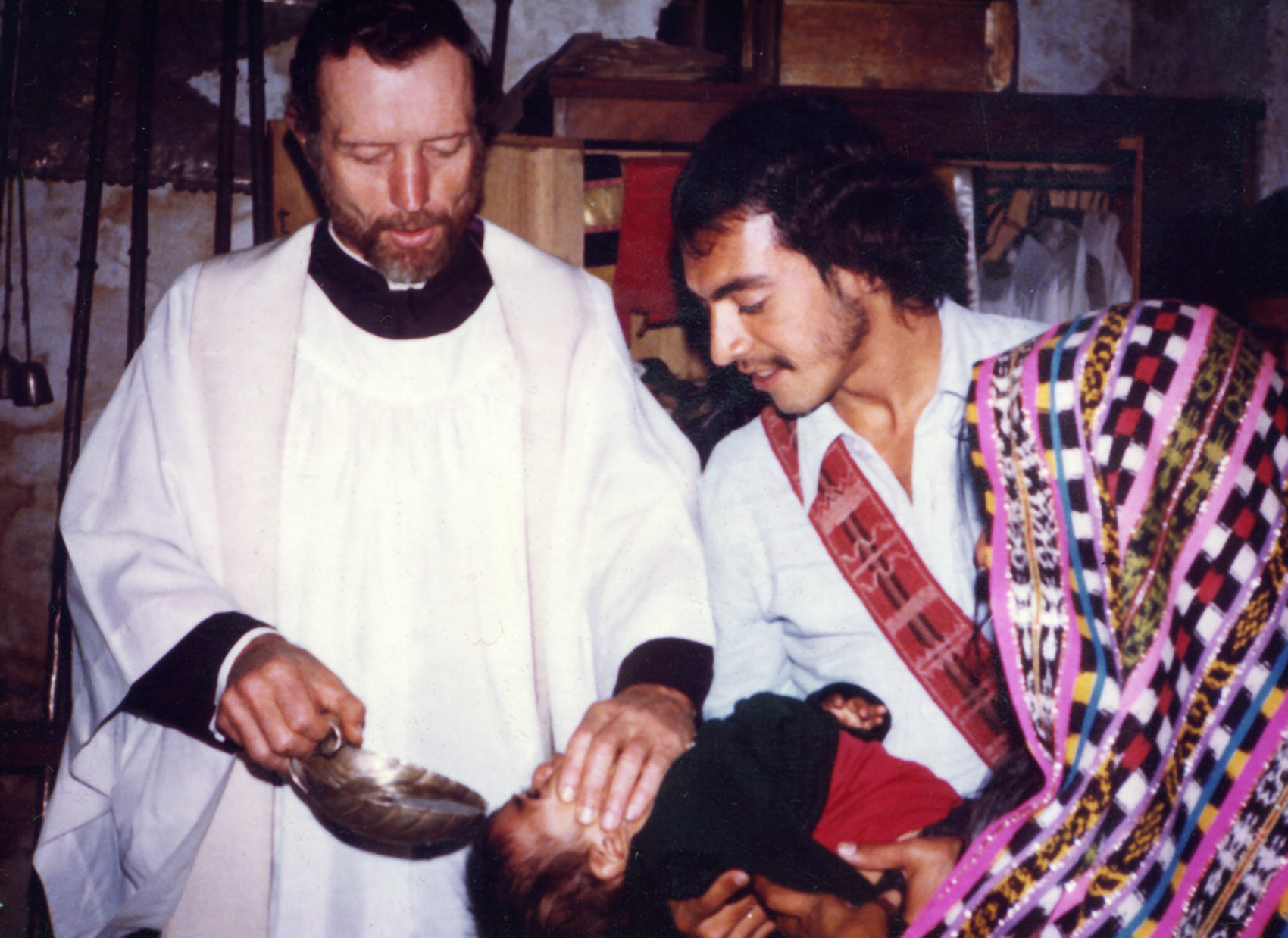

Kathy Rother, principal of Bourgade Catholic High School, keeps an image of her cousin, Fr. Stanley Rother on her desk. Though she never had a chance to meet him in person, she feels a very close connection to the priest who will be beatified in Oklahoma City Sept. 23.
“I’m very proud of the fact he’s a member of my family. We grew up knowing we were born for service,” said Kathy, who attends St. Thomas More Parish in Glendale. “It was something in my family and obviously in his family.”
Fr. Rother, a priest of what is now the Archdiocese of Oklahoma City, spent the majority of his priesthood serving at the Santiago Atitlan mission in Guatemala, where he was martyred in 1981.
Their grandparents’ were siblings, Kathy said. She’s from the “Minnesota Rothers” while her cousin is descended from the branch that moved to Oklahoma during the Dust Bowl. After his death, she connected with Fr. Rother’s sister, Sr. Marita Rother of the Adorers of the Blood of Christ, to compile a family history. It was then that she learned more about her late cousin and began sharing that story with other family members.
“My immediate family didn’t know his story and they’ve been very taken by him,” she said.
At the mission, Fr. Rother was responsible for evangelizing the indigenous population who spoke a Mayan dialect called Tz’utujil. He translated the New Testament and celebrated Mass in their language, an impressive feat considering he had initially failed out of seminary because he had difficulties with Latin.
Fr. Rother also rebuilt the rectory, introduced irrigation techniques he’d learned on his family farm and was instrumental in building a hospital nearby.
Kathy said his work was “perceived as organizing people against the government” because teaching the indigenous populations was considered subversive.

By 1980, Fr. Rother reported that 10 men had been taken from the area, but remained despite the risks, writing “The shepherd cannot run at the first sign of danger.” Shortly after this, his name appeared on a death list and he was called back to Oklahoma. However, he felt called to be with his people and returned to Santiago Atitlan in time to celebrate Holy Week. He visited the U.S. one last time to see a friend ordained, before returning again to Guatemala, when, on July 28, unidentified gunmen broke into the rectory and killed him. His body was buried in his hometown of Okarche, Oklahoma, but his heart and blood were kept in Santiago Atitlan for veneration. Pope Francis recognized his martyrdom Dec. 2, 2016, paving the way for his beatification.
I felt like I had a person I was close to who knew what service to your fellow human beings is about,” Kathy Rother said. “As principal of a high school, I’m not going to get executed, but he’s an inspiration of someone giving their all. … That’s an inspiration for me in Catholic education. The world is so much against what we’re doing.”
The legacy of Fr. Rother’s efforts can still be seen today. Vinhson Nguyen, a seminarian for the Diocese of Phoenix who will be ordained a transitional deacon in Rome Sept. 28, recalled visiting the mission in the summer of 2015, which is not too far from Antigua, where the diocese sends seminarians for their Spanish immersion.
“One of the things that really stood out to me was how many people were in the chapel and around the church. It wasn’t a special day. I wanted to go to confession and there were a lot of people in line for confession,” he recalled.
“Fr. Stanley had a powerful impact on the faith of the people to the point people are still taking part in the sacraments. The faith is very much alive in this little town of Santiago Atitlan. Because of this, I went back and was more converted.”
Nguyen said he’d first heard of Fr. Rother from classmates in Rome from Oklahoma, one of whom gave him a prayer card he now keeps in his breviary.
“One of the things I realized is he was a normal priest from a normal town, but he was a very good pastor who was present to his people,” Nguyen said. “His first concern was to be present for them and celebrate the sacraments for them. He teaches us however ordinary life may seem to us, lay person, priest, sister, we’re called to holiness, and he exemplified that in a special way, just by being present to his people.”

As the first U.S.-born martyr and the first U.S. born priest to be beatified, Fr. Rother is an example of holiness to follow, said diocesan vocations director Fr. Paul Sullivan.
“Whenever young people see an example of someone giving their life for anything, it makes them say ‘wow,’” Fr. Sullivan said. “But for Christ — Fr. Stanley’s life said, ‘This is worth it. Jesus is worth it. I gave Him my life as a priest, I made my vows. In the end I gave my life, period, just so these people would have the Gospel.’ It’s awesome.”
Fr. Sullivan first came into contact with Fr. Rother’s story while he was a seminarian and visited the mission in Guatemala with some classmates while studying there. He recalled the devotion of the people in Santiago Atitlan in one of the side chapels.
“Here we were, 20 years after his death and they still had a devotion to him,” Fr. Sullivan recalled. “He was their priest and he gave their life for them. And he came back to them in the midst of the danger. Others had been killed — he knew there was a risk he could be killed, but he knew he was first called to be a priest, faithful to his people.”
Fr. Sullivan said he’d maintained a devotion ever since, even making sure to take a detour through Oklahoma prior to his own ordination to visit the martyr’s grave. He said he looks forward to, as a priest, being able to offer the Mass on his feast day.
“He’s one of ours. He’s from our country,” Fr. Sullivan said. “He loved the people of Latin America, so much so that he gave his life for them, and so much of our population is Latin American. That’s an honorable thing.”






